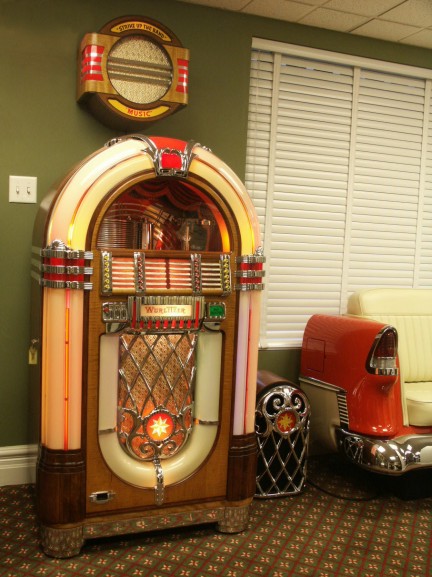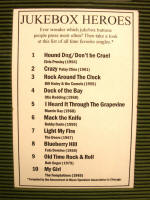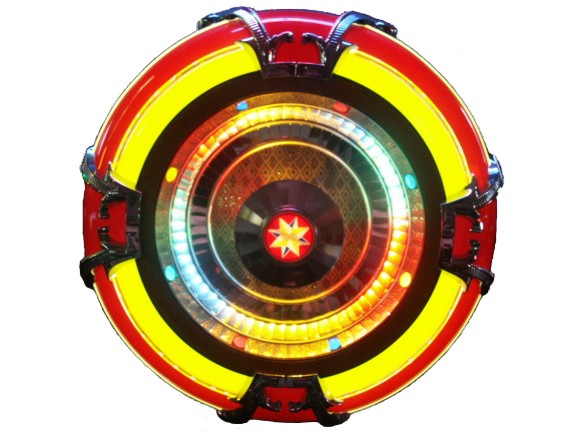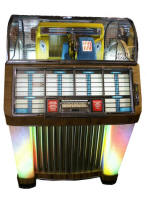|
March 2006 Featured Collection |
|
Jukeboxes |
|
|
|
Jukeboxes of the 1920's and 30's were bland, composed mainly of wood, resembling large radio sets. In the mid 30's, after the discovery of translucent plastic, the creativity of the manufactures began to show. They started adding these plastics, along with shinny nickel platting, and lights. They also added windows to allow the customer to view the mechanism that played the records. The combination of the new designs and the end of prohibition led to a large demand for these jukeboxes. From 1935 until 1939, jukebox manufacturers produced about 70,000 machines a year. The four main manufacturers of jukeboxes included, Rock-Ola, Seeburg, A.M.I. and the most famous, Wurlitzer. Durring World War II, production of jukeboxes was halted for the war effort. In 1945 the demand for jukeboxes returned and in 1946 Wurlitzer released their 1015 model. They had discovered a liquid that boils at a very low temperature. They added this liquid inside of glass tubes and put a light source under it which heated it up and caused it to boil and bubble. They called these bubblers. Along with a new polarizer that created a color changing effect, this bubbler makes the 1015 a very sought after machine by today's collectors. In 1948 Seeburg came out with a jukebox that could play 100 songs, which was revolutionary. Before this, jukeboxes could only play 40 songs, Wurlitzer's could only play 24. Along with more songs, the newer machines of the 50's became sleeker and more square. Eventually jukeboxes were designed similar to the automobiles of the time, with bumpers, fins, tail lights and wrap around windows. Eventually 45's replaced the 78's, and 200 songs became the standard, along with stereo sound. The 60's saw a decline of jukebox production, since teenagers could afford to purchase their own records and television kept many at home. |
||
|
Displayed near our Wurlitzer 1100 Jukebox, the image at the right shows the top 10 'Jukebox Heroes,' according to the Amusement & Music Operators Association in Chicago. It lists the top ten all time favorite singles played by jukeboxes. Click on the thumbnail at the right to view a readable version of the list. These top 10 songs are all on 45's, available for play in our Wurlitzer 1100. |
||
|
The Antique Warehouse collection of jukeboxes and jukebox accessories includes models by three of the top four big manufacturers, Wurlitzer, Seeburg and Rock-Ola. Click on any of the jukeboxes below to learn more about them, and click on any of the jukebox accessories to find out more on them. There is also video of a few of the juke boxes on the picture pages, just click on the picture form the information page. Brown, Hutchins, Mizera. The Ultimate Jukebox Guide 1927 to 1974, 1994. |
||
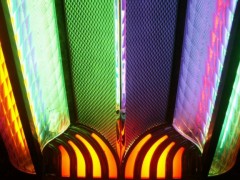 |
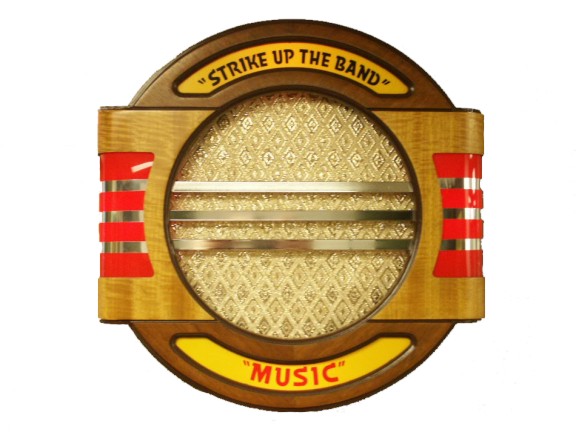 |
|
|
Click here to learn more about these jukeboxes |
||
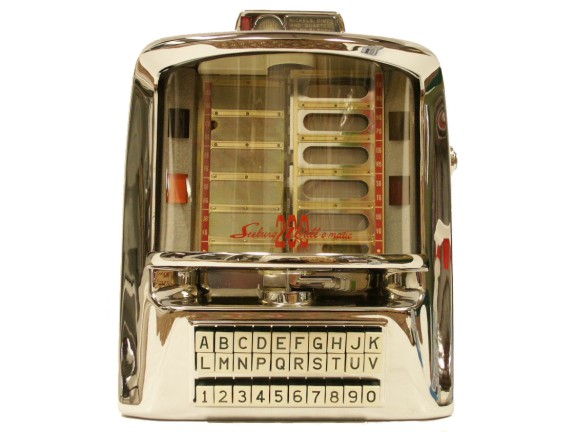 |
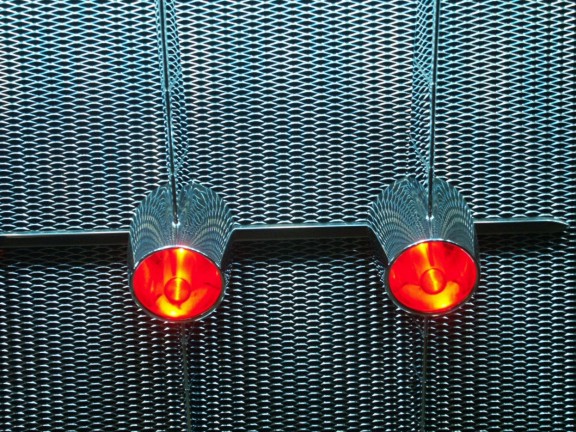 |
 |

